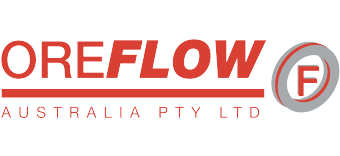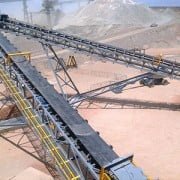What You Need to Know About Conveyor Belt Spillage Control
Conveyor belt spillage is any fugitive material that falls around the load zone of the conveyor belt. When spillage occurs on a daily basis, it can be quite difficult to pick up. The force created when the spillage hits the ground can cause dust to scatter around the area, making it quite difficult to clean up. Conveyor belt spillage can also contaminate other materials being conveyed (i.e. ship loader facilities.) Without proper conveyor spillage control, the conveyor belt will work with reduced efficiency and affect product continuation as well as plant availability.
In some cases, the spillage can occur from the carry side and along the line of the belt. The spillage ends up on on walkways beside or beneath the conveyor which can cause quite a number of issues like falling debris and accidental slips and trips. This can become a hazard if the spillage becomes a lump before falling to the ground. Material spillage also increases the risk of slipping when the material accumulates on the walkway beneath the conveyor.
Fugitive material can end up burying conveyor components, idlers, and even structural supports which can lead to costly labour clean-ups and replacement parts. Spillage can build up around idlers and if left untreated, will lead to increased belt friction and seize up the idlers. Many material handling plants are designed and installed without paying too much attention to spillage control. In here we’ll be discussing what you need to know about managing material spillage when operating a belt conveyor system.
How to control material spillage
To effectively control material spillage, we should take a look at these 3 key factors:
- Loading zone containment
- Preventing the material from escaping the carry side of the belt.
- Controlling material discharge.
Containment at the loading zone
The most common way to avoid spillage issues is by eliminating the spillage right from the source. Maintaining a tight seal at the transfer points is of utmost importance to contain spillage from becoming airborne. Containment at the loading zone depends primarily on how efficient the seal is between the fixed skirting and the moving conveyor belt. Extraction of dust is also crucial, as is belt maintenance and support.
Troughing the conveyor at the load point requires well-designed rubber skirts to ensure that the material is properly contained. The key to proper containment, however, relies on how accurate the seal is maintained. For example, the seals can be impaired when the impact of the material spillage causes the belt to sag, thus allowing the spillage to escape. In order to create an effective seal, close-tolerances should be maintained. This can only be achieved by using load impact bars placed between troughing roller sets. This absorbs the impact of the material falling from the loading chute which provides a low-friction support platform for the conveyor belt. This also prevents the sagging of the conveyor belt when it gets impacted by material spillage.
When the conveyor belt is supported on a fixed plane, the impact bars allow skirt rubbers to be tightly sealed at the loading section which reduces material spillage and prevent it from going airborne. This system will remain effective as long as the components are properly maintained. All the components are subject to wear, which is why it’s extremely important to fit clamps that allow fast re-adjustment. It’s also important that there should be a safe and easy access to the clamps to allow re-adjustments in the most cost-efficient way possible.
Preventing material spillage from the carry side of the belt
The conveyor belt should be inspected closely for misalignment or belt wandering which is one of the primary causes for material spillage. Belt wandering interrupts production due to it being stopped or repaired before operations are resumed. To perfectly track the belt to the center, the pulleys and idlers should be aligned, squared, and leveled prior before it is loaded. The proper way of loading the belt is by distributing the load in the center.
This can be achieved by installing a belt tracking or training device. But before these get installed, the belt should be monitored first to help identify any problem areas that cannot be alleviated through adjustments. To prevent material spillage from the carry side of the belt, consistent monitoring and maintenance should be exercised.
Controlling material discharge
Cleaning the conveyor belt at the discharge points eliminates fine material, thus reducing carryback that falls along the conveying strand. The removal of wet fines, belt washing, and spillage return are issues that need to be addressed in order to cope with difficult residues and effectively manage conveyor belt spillage.
Conclusion
Conveyor belt spillage problems can hinder your productivity potential, increase clean-up costs, and also pose a threat to your health. Make sure to follow these steps to ensure proper control of material spillage when operating a belt conveyor system.



